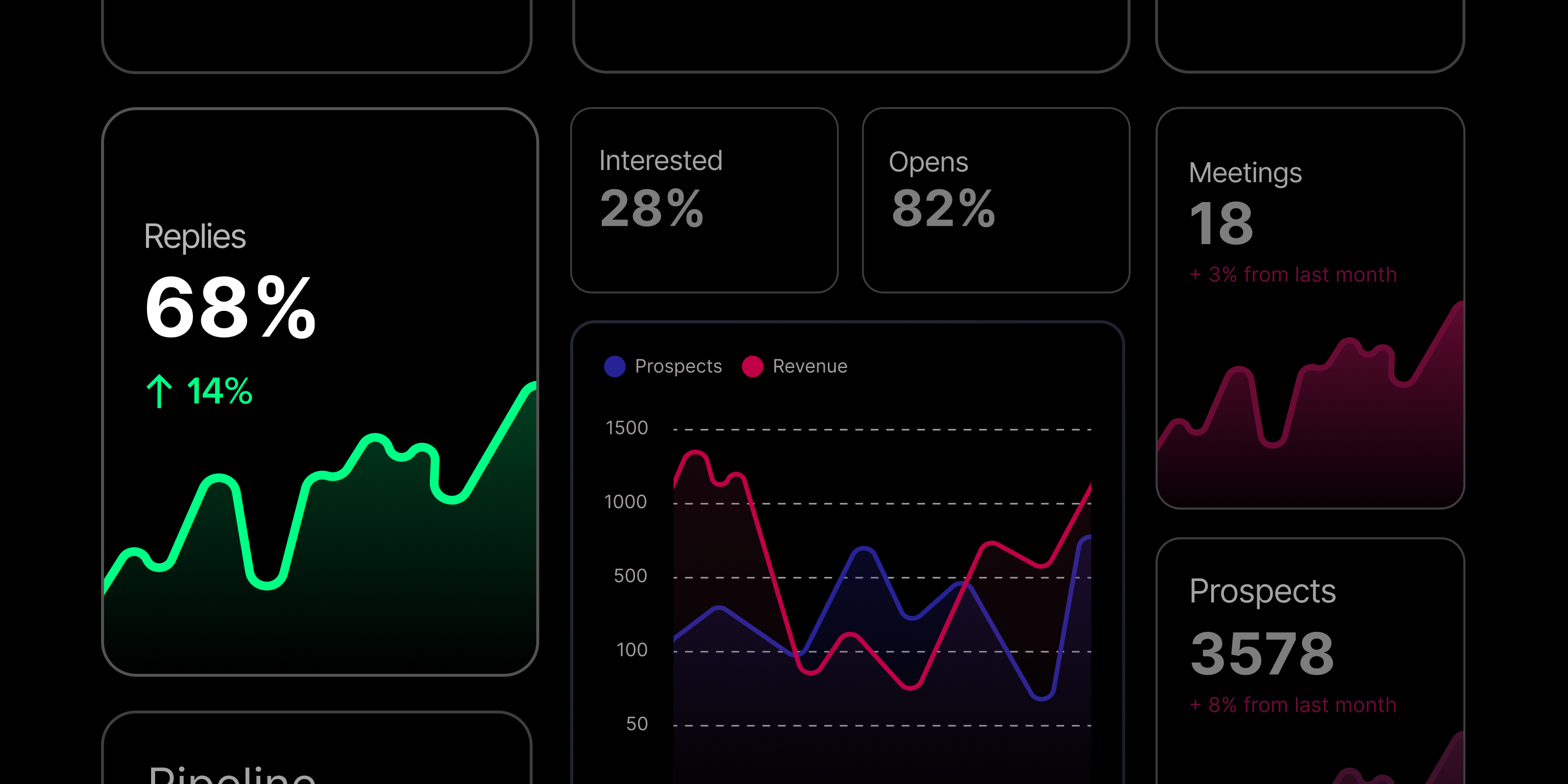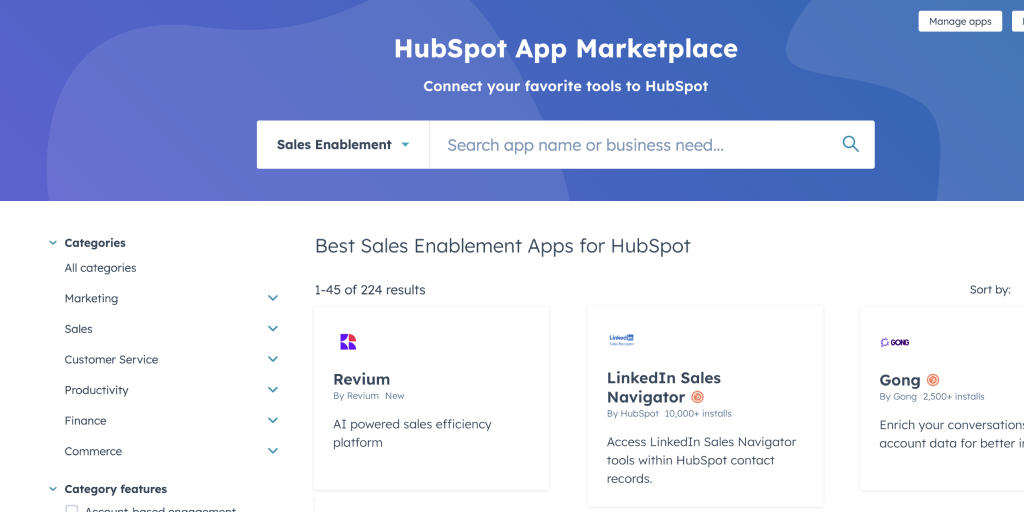Sales prospecting takes place on a one-to-one basis through outbound activities for example, when a sales development representative (SDR) makes a cold call, sends an email, or a direct message via LinkedIn.
Prospecting in marketing involves employing inbound techniques such as pay-per-click ads or content marketing like this piece you are reading now.
Prospecting is usually a short-term approach that aims at:
- Starting a conversation
- Qualifying the prospect
- Positioning your product or service as a solution to their problem
What is the definition of a prospect?
In short, a prospect is a potential customer. Sometimes we talk about leads and sometimes we talk about prospects, but there is one major difference between them.
Leads are those that perhaps have expressed interest in your company through behaviors like visiting a website, subscribing to your blog, or signing up for a free trial or demo.
Prospects are leads that are qualified and, therefore, align with your target audience and buyer personas so, in short, can afford your product or service and it’s the right fit to pursue.
How to prospect for sales?
- Research your prospect and their business to gauge whether you can provide value.
At this stage of prospecting, we’re looking to accomplish a few goals: - Determine if the prospect is workable.
- Qualify and begin prioritizing prospects.
- Find opportunities to develop a connection through personalization, rapport building, and trust development.
- Learn how to prioritize the right prospects.
Levels of prioritization will vary between each type of sales organization and each salesperson, but the main idea is to create a few buckets of prospects based on their likelihood to buy and focus on one bucket at a time. This is where good CRM software will add extra value to your organization and prospecting which we will come to below. - Prepare a personalized pitch for each prospect.
Never send mass/bulk cold outreach emails as though you were sending a company newsletter through a channel like Mailchimp to multiple cold accounts. It might save time, but the open rates will be lower, the chances of arriving in Spam greater and the conversion rate tiny. You will very quickly burn through a large prospect list and, whilst short term gains may emerge, it’s a medium to long term terrible play for sustained growth.
Remember, each prospect is a real person who is a blank slate with their own unique experiences.
Take some time to do a little research and find out what is really important to them, including their interests, hobbies, or values. Browse their website and social media channels to learn about their key initiatives and then tailor your outreach and approach to match so it sounds human and is relevant to the prospect or their company.
This, of course, takes time and, if you need this type of service to scale, talk to us about the relevant AI software that can speed up the process if you want to scale up. If starting small, though, this is the correct way to engage.
Make the prospect the star of the show, not the other way around. Position your messaging/strategy toward the value prop focused on the prospect. People don’t care about what your product can do unless it solves a specific problem for them. - Learn the basics of email marketing for b2b cold emails.
Check out our guides on: How to Craft the Perfect Email Subject Lines for B2B Sales and follow this: Step by Step Guide to Crafting B2B Email Subjects - Use The Multi-Channel Outreach Process.
If you are ready to take the conversation to different channels, be sure to reference the other channels you reached out to and create that connection. An example would be connecting via LinkedIn and sending a follow up message such as:
Great to connect with you, Ann. I’d love to learn more about {propect's company} and your journey to date and see what value we can add. How does Thursday look for you for a quick call?’
If you have so far failed to connect via LinkedIn and want to try emailing to reach the prospect, try a final line on LinkedIn such as ‘Looks like email might be a better way to get in touch with you…’
Sending the email should follow a reference point such as:
‘Ann,
Looks like LinkedIn wasn’t the best way to speak. As you know from my connection message, at {Company Name} we help companies {with value prop} so when I stumbled on {propect's company} , I figured I would reach out.’
Follow up with more relevant personalization related to the prospect role in the company and provide social proof as to why you would be a good fit.
Bringing that human effort back to sales by establishing a link between communication channels is essential. It looks like you are a real person to the contact and shows determination without being over the top.
If employing this technique, you need to ensure that, whether by CRM or via whatever recording technology/techniques your company uses, you keep a note of who you have contacted and by what means so the user does not feel confused by different messaging via different channels.
Utilizing multiple channels to reach your ideal customer is a must. Having a process that works these channels in conjunction with one another only supercharges your outreach efforts. - Actively work on your call lists
You’ve got the cold call list and the warm lead list, and even a lost lead list. Prioritize each list and then take some time each day to call the people on your lists.
Never underestimate the power of a phone call! Research shows that:
- 69% of buyers accepted a call from new salespeople in the past 12 months
- 27% of sellers say making phone calls to new contacts is extremely effective
- 82% of buyers are willing to meet the salespeople who reach out to them
- 62% of buyers want to hear from sellers when they are actively looking for a solution to resolve a problem
- 75% from various industries have attended an event or scheduled a meeting based on unexpected cold calls
First off, write down a list of open-ended questions for all your prospect lists.
What you need is not a scripted sales pitch, but a dialogue during which you can learn about their pain points, needs and wishes and, most importantly, where they are in their decision process. If you can maintain an interesting conversation, qualifying leads becomes much easier.
Find out what they are looking for. Do they have a specific solution to their problem in mind? Do they have enough information? Is there any information you can send them? Perhaps you can invite them to a webinar or a seminar that you’re hosting.
The best strategy here is once you have qualified them, try to book a specific meeting in their calendar. If unable to get meeting booked, call to touch base again in 6 weeks or 6 months. In the end, it’s all about keeping in touch. By working the list consistently, you’ll be able to turn lukewarm leads into warmer leads and, finally, into hot leads.

How to manage your pipeline
Without a process for getting people into- and through- the pipeline, business growth in a sustainable and manageable way is almost impossible.
According to the Forbes Business Council, here are their top strategies for overall customer satisfaction and measuring the successful output of your company's pipeline:
- Focus On High-Value Prospects
Looking at your sales process, you will notice that it takes the same amount of time to close most deals. Focus your efforts on the best, most sales-ready and high-value prospects. Avoid getting distracted by anything that won’t deliver in the short term.
Understand the difference between SQL and MQL. Or to put it another way, qualified leads versus qualified leeches. Leeches (MQL) steal your time for free by picking your brain and they will never become bonafide clients. Focus first on filling your pipeline with qualified leads (SQL) while closing the low-hanging fruit and nurturing the larger accounts that fit your sweet spot. - Set Realistic Expectations
A huge pipeline is a great thing to have, but being realistic on its actual close is imperative. Saying everything is moving to close and constantly bumping the close date can kill a business. - Track Your Customer Journey
Utilize a proper CRM (Customer Relationship Management) system so you and leadership can have visibility at all times on the prospect through a nurture and qualification process. This is contingent on the product, service or offer and will vary based on price and objective. By utilizing a CRM, you can track the customer journey, as well as your retargeting, lifetime value and overall satisfaction of the customer or client. - Set Up Measurable KPIs
Implement key performance indicators for your sales pipeline like the closed-won ratio, how long it takes to close and how long it takes for a prospect to move throughout the stages. This allows you to measure what is working and what isn’t - Create Clearly Defined Stages
The biggest challenge is that the best salespeople are seldom the best administrators. If your CRM data isn't accurate or up-to-date, you'll still end up with fuzzy forecasts. An easy sniff test with your reps comes from asking these two questions: “Why is this person going to buy?” and “Why will they buy on this date?” The answers drive accountability. - Move Customers Along The Pipeline
Truly effective sales pipelines need curating, just like a young plant needs attention to grow. That means following up regularly with small touch points to move potential customers along the pipeline, even if it’s small movement. Not following up because of distractions, malaise, being discouraged or the 100 other reasons we don't follow up will kill the effectiveness of your pipeline.
What are the sales tools needed for prospecting?
There is an endless list of sales technology in the marketplace to help you get up and running. Many will claim to be the next big thing in sales prospecting but from a basic level, here are the tools many SDR's are using in 2022.
For finding prospects:
- LinkedIn Sales Navigator (circa $1500) will help you find the right prospects & build relationships.
- ZoomInfo For Leads Data is the premium choice for finding the best contact information and insights. However, at circa $40k it will be out of some companies’ budgets. There are cheaper alternatives, such as Lusha, Apollo, etc.. We do not recommend Seamless AI.
- Intent Data software measures prospects' digital journey across 5,000+ premium B2B websites, so you know exactly when to approach a prospect when they are in the consideration mode. Intent data tells you when buyers are actively researching online for a solution and which products and services they are interested in, based on the web content they consume. This Intent data will guide sales teams to understand which prospects are ready to buy and avoid wasting time and money on those that are not. The software can cost circa $28,500 per annum.
| What You Need | Considerations |
| Email automation software | There are different software solutions for managing campaigns that can send automated emails in sequences. The team at Revium has tested them all and, aside from our own proprietary tech that we use in-house, the best is Outreach.io. One seat with them will cost circa $4,950. |
| Email Domain Whitelisting | Emailing out cold outreach from your own domain is a recipe for disaster so we always recommend a sub-domain whitelisted through email solutions that are set up to best SMTP service provider protocols. Our clients receive a warm up account that achieves 99.7% deliverability and delivers into the right inbox rather than getting lost in the promotions/updates folder. |
| LinkedIn Automation | It can be very tricky as LinkedIn can stop these solutions quite quickly. LinkedIn frowns on automation. There are options available, but we won’t list them here in order to protect the relevant companies. |
| Total CRM System | Practically a must have for Sales and Marketing in B2B. The options are endless. Our company is a big fan of Hubspot over Salesforce, however both can be expensive once all the required add ons are factored in. If Sales and Marketing are joined together, which they should be, Hubspot comes out on top.Tempor ut nisi, at nisl, enim morbi nisl sapi |
Think about dividing each function you would require in a CRM into needs, wants and would like. Do a comparison on each company's website and find the one that matches your budget and functionality. Sometimes cheaper in the short run can end up costing more in the long run if your chosen one cannot fulfill all your needs and wants as you grow.
- Deals and tasks
- Contact and lead management
- Insights and reporting
- Email tracking
- Email templates
- Call recording
- Marketing automation
- Premium customer support
- Project management
- Lead scoring
- Etc
Conclusions
If you would like to learn more about sales prospecting techniques, stories, how tos and real life examples, tune into the Pitchmen podcast, available wherever you get your podcasts from.
If you or your company would like training on any element of Sales, check out our Training Workshops for the winning blueprints to avoid the learning curve your competition is on.
If you have any specific Sales questions, reach out to our leadership team on LinkedIn. We are always happy to help businesses and people grow in the Sales community.





